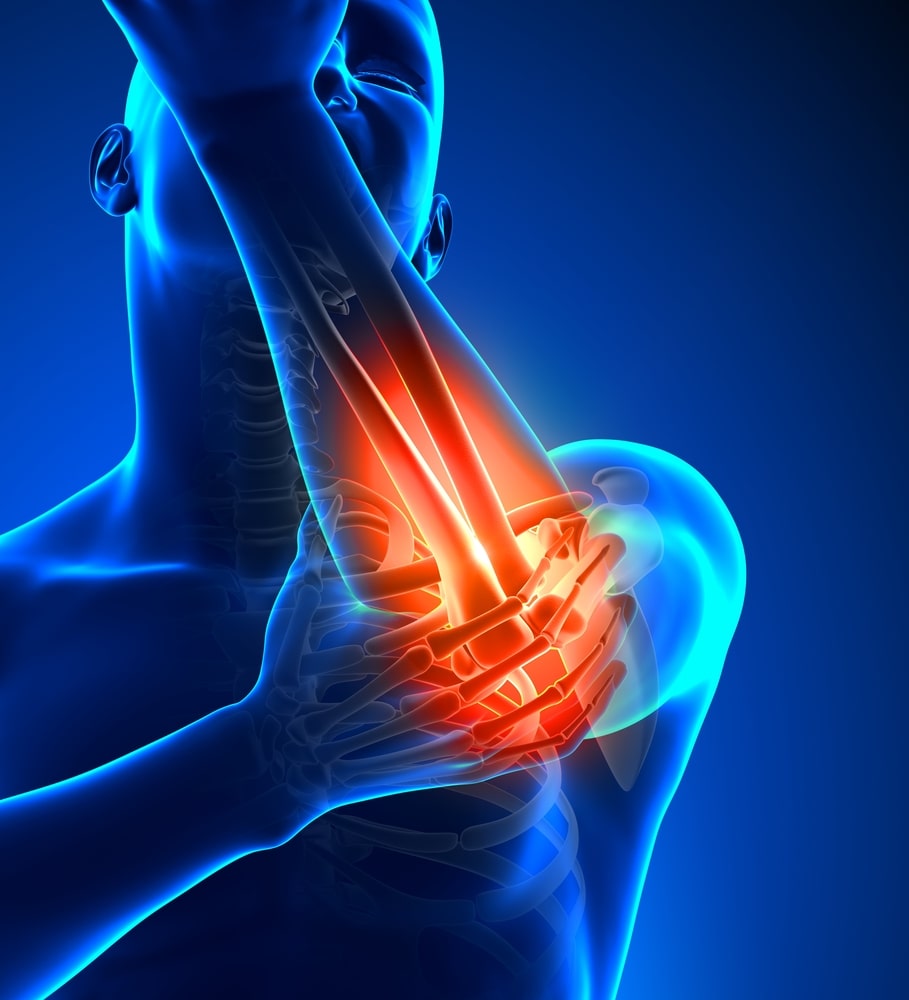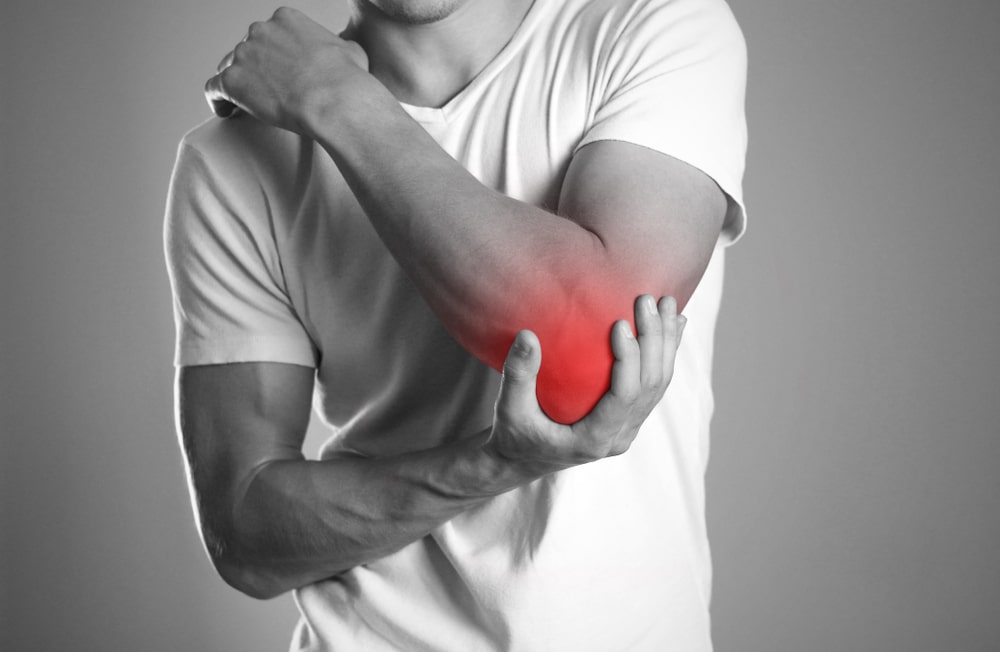Are you experiencing pain on the outside of your elbow? Is it tender to touch? Is it worse when you actively extend your wrist and turn your palm up? Have you noticed a reduction in your grip strength? Difficulty with making a fist or gripping an object, such as a tennis racket? Pain when opening a door or shaking hands?
Did the pain begin after a direct blow to the elbow? Or was it more of a gradual onset? Do you play a racquet sport such as badminton, tennis or squash? Have you increased your playing time? Or do you have an occupation that requires repetitive wrist extension, such as manual labour or typing on a computer?

Tennis elbow pain explained
You may have lateral epicondylitis – more commonly referred to as tennis elbow. To further understand this condition, let’s explore the anatomy of the elbow.
Three bones make up the elbow the joint
The upper arm bone (humerus) and the two bones in your forearm (radius and ulna). On either side of the base of the humerus are two bony bumps known as the epicondyles. The bony bump on the outside (lateral side) of the elbow is called the lateral epicondyle. This is the origin site of the muscles that are responsible for extending your wrist and fingers. These muscles are connected to the bone via a tendon. When the extensor muscles become weak from overuse, microscopic tears form in the tendon where it attaches to the lateral epicondyle. This leads to inflammation and pain.
Causes & Symptoms
Overuse can be caused by any repetitive gripping activity, especially if you use the thumb and first two fingers. Repetitive motions, such as gripping a racket during a swing, can strain the muscles and put too much stress on the tendons. This stress can over time lead to microscopic tears in the tissue. The main symptom of tennis elbow is pain and tenderness on the outside of your elbow, where the injured tendon connects to the bone. This pain may also radiate into the upper or lower arm. Despite the site of injury being in the elbow, you are most likely to experience pain when doing things with your hands.
Treatment
To ensure a proper diagnosis and individualized treatment plan book an appointment with a sports clinic physiotherapist. They can guide you through your injury from initial pain management strategies to being able
to return to your previous activity levels. A physiotherapist will use therapeutic exercise, manual therapy, modalities such as ultrasound and electrical stimulation, and acupuncture to guide you through an active recovery process. They will ensure you are able to maintain movement and increase flexibility, muscle strength and endurance. This will reduce pain and improve function. Book an appointment with a physiotherapist at a Panther Sports Medicine center in Calgary today!





